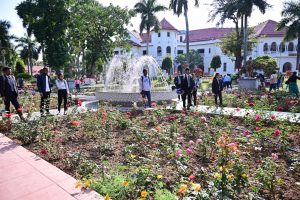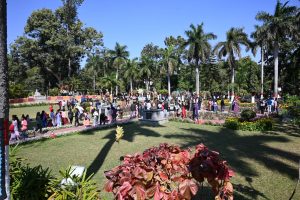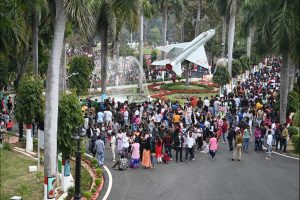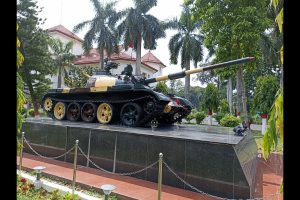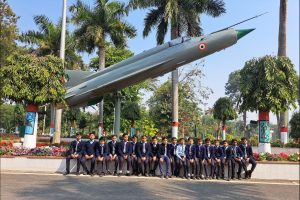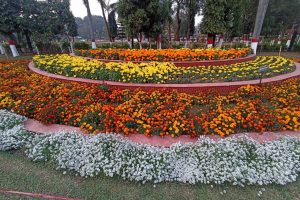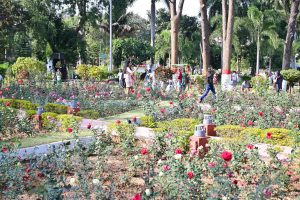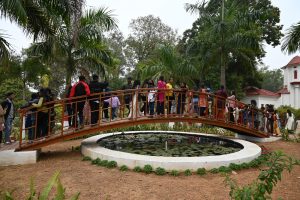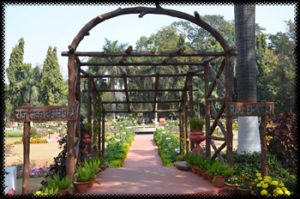
RAJ BHAVAN GARDEN
Raj Bhavan consists of gardens named after inspiring and eminent personalities. Sprawling lawns, fascinating fountains and beautiful collections of seasonal flowers are the hallmark of these gardens.

Raj Bhavan consists of gardens named after inspiring and eminent personalities. Sprawling lawns, fascinating fountains and beautiful collections of seasonal flowers are the hallmark of these gardens.
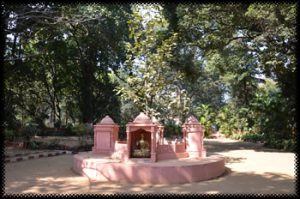
The campus has some beautiful gardens and fruit orchards. Ashoka Udyaan, the main lawn, is also the largest garden and has more than a hundred varieties of roses. The Murti Garden, named after an old statue of a girl, is another sprawling garden.Buddha Garden, named after Lord Buddha, has a beautiful landscape and a green house.
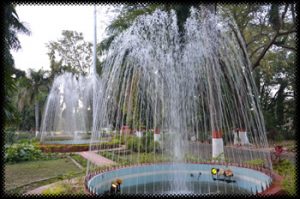
Phulo Jhano Garden is famous for its musical fountains, the Jawahar Phuhaars.
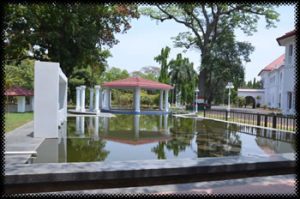
Lily pond, present in the backyard of the main building, is often used by the governor for his evening walk.
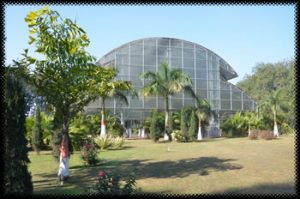
Mahatma Gandhi Aushadhi Udyaan is on the south side of Raj Bhavan . A beautiful fountain stands in the middle of this garden. The Udyaan has a good collection of medicinal plants, spices, herbs, and some very efficacious local medicinal ‘jadi-buties’ used by the tribal people.
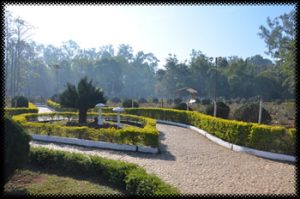
A new garden called Nakshatra Van was added in 2003.
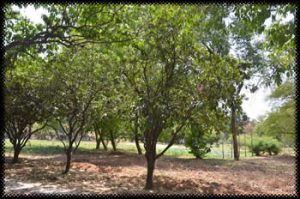
Raj Bhavan’s gardens have lush green lawns, pathways, flower beds of a variety of seasonal flowers, fountains, benches and lights . It has its own kitchen garden that meets the needs of the household and its staff. The extra produce is sent to some of the orphanages and old-age homes in Ranchi.
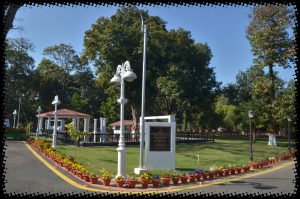
A new garden called Shri Guru Govind Singh Vatika added beside Governor’s House.
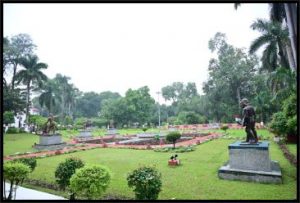 MURTI GARDEN
MURTI GARDENThe ‘Murti Garden’ decorated with the statues of freedom fighters of Jharkhand, conceived by the Honorable President Smt. Draupadi Murmu, was inaugurated on 20 September 2024 at Raj Bhavan in the dignified presence of the Honorable Governor Shri Santosh Kumar Gangwar. In this ‘Murti Garden’, apart from Yugpurush Swami Vivekananda, statues of prominent freedom fighters of Jharkhand, Gaya Munda, Jatra Tana Bhagat, Telanga Kharia, Nilambar-Pitambar, Sido-Kanhu, Tilka Manjhi, Diva-Kisun, Veer Budhu Bhagat, as well as Param Vir Chakra winner Albert Ekka have been installed.
 Swami Vivekananda
Swami Vivekananda(Birth- 12 January 1863)
( Death- 04 July 1902)
‘Uthishthit Jagrat Praapya Varatribodhat’
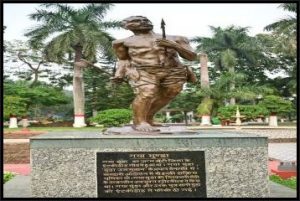 Gaya Munda
Gaya MundaGaya Munda was born in Aitkidih village of Khunti district. Gaya Munda was the chief commander of ‘Munda Ulgulan’. He also played an active role in Sardari movement. Gaya Munda was arrested by the then Deputy Commissioner of Ranchi, Streetfield. Gaya Munda and his son Sanare Munda were hanged in Aitkidih.
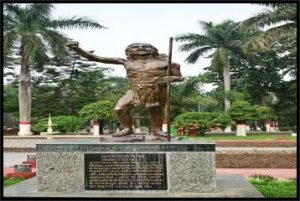 Jatra Tana Bhagat
Jatra Tana Bhagat(September 1888 -1916)
Jatra Bhagat alias Jatra Oraon was born in September 1888 in Chingri Navatoli village of Vishunpur police station in Gumla district of Jharkhand. In 1912-14, he started a non-violent non-cooperation movement against the British Raj and the landlords. Even today, the daily routine of Tana Bhagat tribals begins with saluting the national flag. Jatra Bhagat died in 1916.
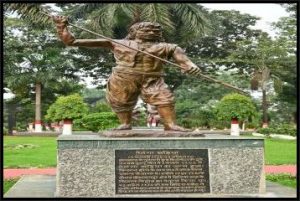
Telanga Kharia was born on 9 February 1806 in Murgu village, situated a few kilometers away from Gumla in Jharkhand. Apart from being a farmer, he also knew how to use weapons. He led the rebellion against the British Raj in the Chotanagpur region during 1850-1860. On 23 April 1880, a British agent ambushed him near his training arena, opened fire on him and he was martyred.
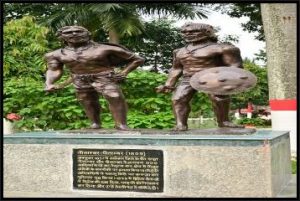 Nilambar-Pitambar (1859)
Nilambar-Pitambar (1859)In October 1857, the brave sons of Latehar district, Nilambar and Pitambar, led about 500 tribals and attacked the British supporters present in the area. The rebel tribals captured the Palamu fort and waged a guerrilla war. In 1859, the British forces suppressed the rebellion, arrested the brothers and hanged them in Leslieganj.
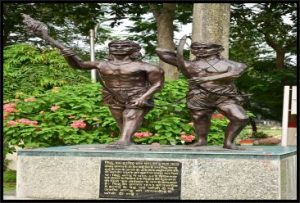 Sidhu-Kanhu
Sidhu-KanhuTwo brave brothers of Santhal Pargana, whom we know as Sidhu-Kanhu Murmu, forced the modern weapons of the British to bow down before their arrows and bows. Sidhu-Kanhu started a rebellion against British rule and exploitation in 1855-56 which is known as ‘Hul Movement’. Sidhu was hanged on a banyan tree in Panchkatiya in August 1855 while Kanhu was hanged in Bhognadih.
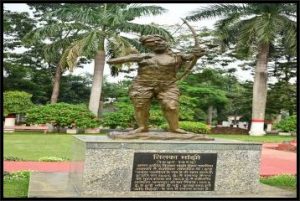
The immortal martyr Tilka Manjhi was the most popular among the fierce Pahariya fighters. He is also known as ‘Jabda Pahariya’. He liberated the Ramgarh camp in 1778 AD and killed Cleveland (Collector, Bhagalpur) in 1784 AD. He was hanged in 1785 AD. The grateful nation remembers him as “Adi-Vidrohi”.
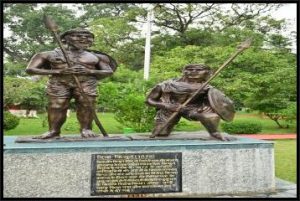 Diva-Kisun
Diva-KisunDiva and Kisun Soren, who were uncle and nephew, were the heroes of Diva Kisun Rebellion, one of the major rebellions of Jharkhand. In 1872 they mobilized the tribals against the British and opposed tax imposition. Following the inaction of the king during a famine, they helped the people and revolted against the British rule. They were eventually captured and hanged in Saraikela jail.
 Veer Budhu Bhagat
Veer Budhu BhagatVeer Budhu Bhagat, an Oraon tribal revolutionary from Jharkhand, led the ‘Kol Rebellion’ against the British rule in the 19th century. He formed a large organization against the British revenue policies. On 13 February 1832, Budhu Bhagat was captured by the British while fighting against Captain Imphey and he attained martyrdom.
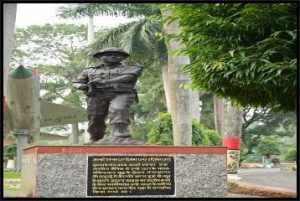 Albert Ekka
Albert EkkaLance Naik Albert Ekka of Gumla was an Indian soldier who was killed in the Battle of Gangasagar during the Indo-Pakistani War of 1971. He was posthumously awarded India’s highest military honour, the Param Vir Chakra, for displaying indomitable courage in the face of the enemy.
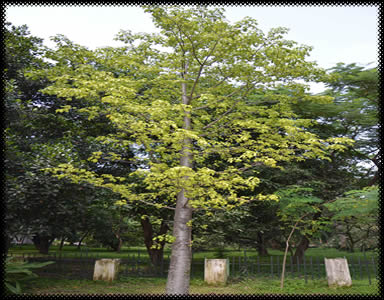
KALPATARU
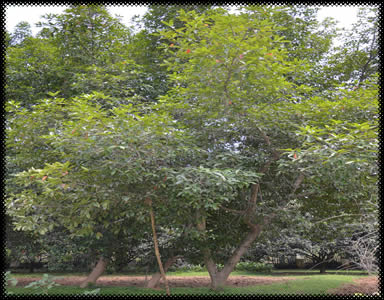
RUDRAAKSH
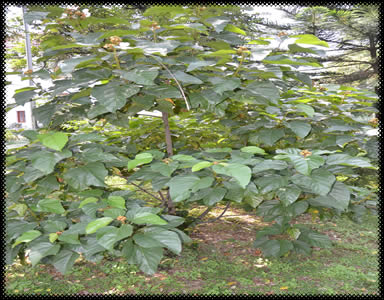
SINDUR
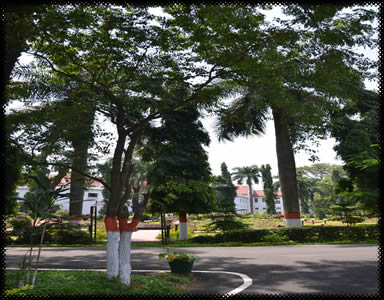
CHANDAN
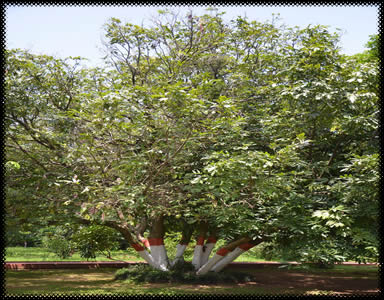
SITA ASHOK
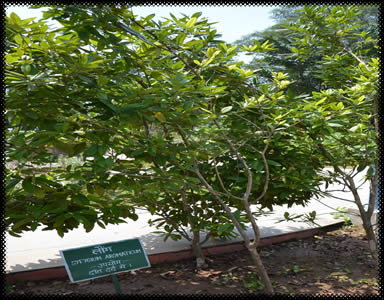
LAUNG
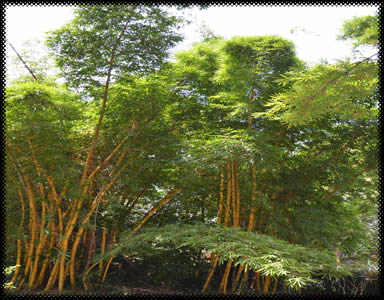
PILA BAANS
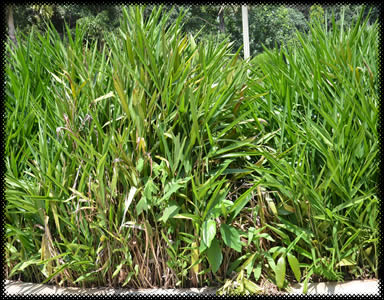
ILAYEECHI
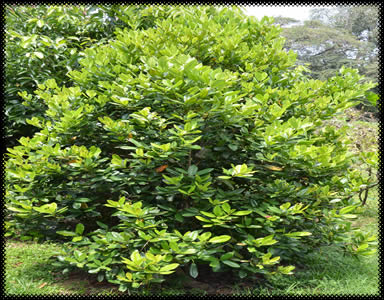
ALL SPICES
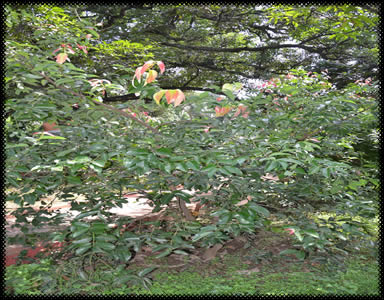
KABAB CHINI
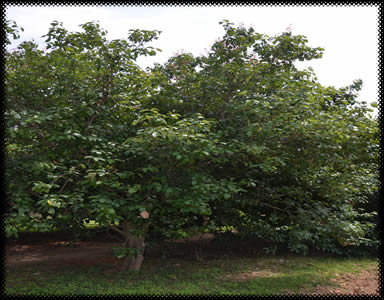
DAAL CHINI
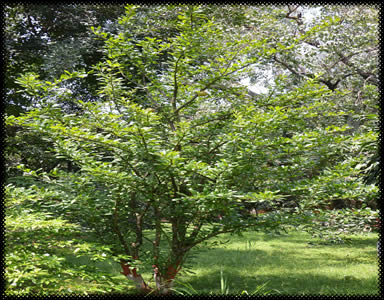
PED KADDU
Raj Bhavan gardens are open to public every year during the month of January-February during which large number of people visit the garden. Raj Bhavan premises have also been opened for the school children who are taken around the premises and the gardens. During the year 2024, 2,70,530 (Two Lakh Seventy Thousand Five Hundred and Thirty) people visited Raj Bhavan to see the gardens.

